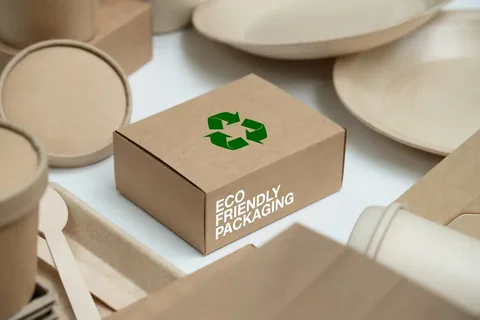In recent years, sustainability has shifted from a buzzword to an urgent necessity, especially within the packaging industry. As environmental concerns escalate, consumers, businesses, and governments are pushing for greener alternatives to traditional packaging methods. By 2025, sustainable packaging will no longer be optional — it will be the cornerstone of responsible production and consumption. This blog explores why sustainable packaging is the future, highlighting key eco-friendly solutions shaping the market today and in the coming years.
Rising Environmental Awareness and Consumer Demand
One of the primary drivers behind the shift to sustainable packaging is the growing awareness of environmental issues such as plastic pollution and climate change. Consumers now actively seek brands that demonstrate responsibility towards the planet. Studies show that over 70% of consumers are willing to pay a premium for products with environmentally friendly packaging. This shift in consumer behavior motivates companies to innovate and adopt sustainable packaging solutions that minimize ecological footprints while maintaining product quality.
Government Regulations and Industry Standards
Governments worldwide are implementing stringent regulations to curb plastic waste and promote sustainability. Policies like the European Union’s Single-Use Plastics Directive and bans on plastic bags and microbeads have set a precedent. In 2025, packaging manufacturers must comply with evolving laws mandating recycled content, biodegradability, and recyclability. These regulatory frameworks encourage industries to develop packaging that aligns with circular economy principles — reducing waste and promoting reuse.
Innovative Materials Transforming Sustainable Packaging
Advancements in materials science are enabling exciting innovations in sustainable packaging. Biodegradable plastics made from plant-based polymers, compostable packaging derived from agricultural waste, and recyclable paperboard with eco-friendly coatings are just a few examples. These materials offer comparable functionality to conventional plastics but break down naturally or can be easily recycled. The rise of mushroom-based packaging and seaweed-derived films further illustrates how nature-inspired materials are gaining traction in 2025.
Circular Economy Models and Packaging Lifecycle
Sustainable packaging embraces the concept of a circular economy, which focuses on keeping materials in use for as long as possible. Packaging designs that prioritize reuse, repair, and recyclability reduce waste and conserve resources. Brands are adopting refillable containers, returnable packaging, and innovative take-back programs. For example, reusable glass bottles for beverages or refill stations in retail encourage consumers to participate actively in waste reduction, supporting a more sustainable future.
Reducing Carbon Footprint Through Sustainable Design
Beyond materials, sustainable packaging involves rethinking design to minimize environmental impact. Lightweighting — reducing the amount of material used without compromising strength — lowers transportation emissions and resource consumption. Optimizing package shapes for efficient stacking and shipping reduces carbon footprints. Additionally, the use of eco-friendly inks and adhesives minimizes harmful chemical usage, aligning packaging production with sustainability goals.
Role of Technology in Sustainable Packaging
Technology plays a crucial role in advancing sustainable packaging. Digital printing reduces waste and allows for on-demand production, lowering inventory and overproduction. Smart packaging equipped with sensors can monitor product freshness, reducing food waste. Blockchain technology ensures supply chain transparency, allowing consumers to trace the environmental impact of packaging materials. In 2025, these technologies will be increasingly integrated to drive efficiency and sustainability.
Cost Implications and Long-Term Benefits
While sustainable packaging may initially involve higher costs, the long-term economic benefits outweigh the investment. Eco-friendly materials and designs often result in savings through reduced waste disposal fees, improved supply chain efficiencies, and enhanced brand loyalty. Moreover, as demand increases and technologies mature, the cost of sustainable packaging solutions is expected to decline, making them accessible to businesses of all sizes.
Consumer Education and Brand Communication
Educating consumers about the benefits and proper disposal of sustainable packaging is essential for maximizing impact. Clear labeling about recyclability, compostability, and reuse instructions helps prevent contamination in recycling streams. Brands that communicate their sustainability commitments transparently build trust and foster positive consumer relationships. Packaging serves as a direct communication channel, making it vital to embed sustainability messages effectively.
Challenges and Future Directions
Despite progress, challenges remain in adopting sustainable packaging universally. Issues such as inconsistent recycling infrastructure, material contamination, and balancing performance with eco-friendliness require ongoing research and collaboration across industries. Future directions include scaling biodegradable materials, improving global recycling systems, and integrating circular design principles from the outset of product development. Innovation and cooperation are critical to overcoming these hurdles.
Why Sustainable Packaging Will Define 2025 and Beyond
The future of packaging is undeniably sustainable. As businesses, consumers, and regulators align their goals around environmental stewardship, sustainable packaging emerges as the key enabler of change. It not only addresses pressing ecological challenges but also offers opportunities for innovation, differentiation, and economic growth. In 2025 and beyond, eco-friendly packaging will be synonymous with forward-thinking brands that prioritize the planet alongside profit.
Conclusion
Sustainable packaging is more than a trend — it is a fundamental shift in how we design, produce, and consume products. By embracing eco-friendly materials, circular economy principles, innovative technologies, and consumer education, the packaging industry is paving the way for a greener future. As environmental awareness deepens and regulations tighten, sustainable packaging will become an essential component of responsible business practices worldwide. Staying informed and proactive in adopting these solutions is crucial for brands that wish to stay competitive and contribute positively to our planet’s health.

Leave a Reply